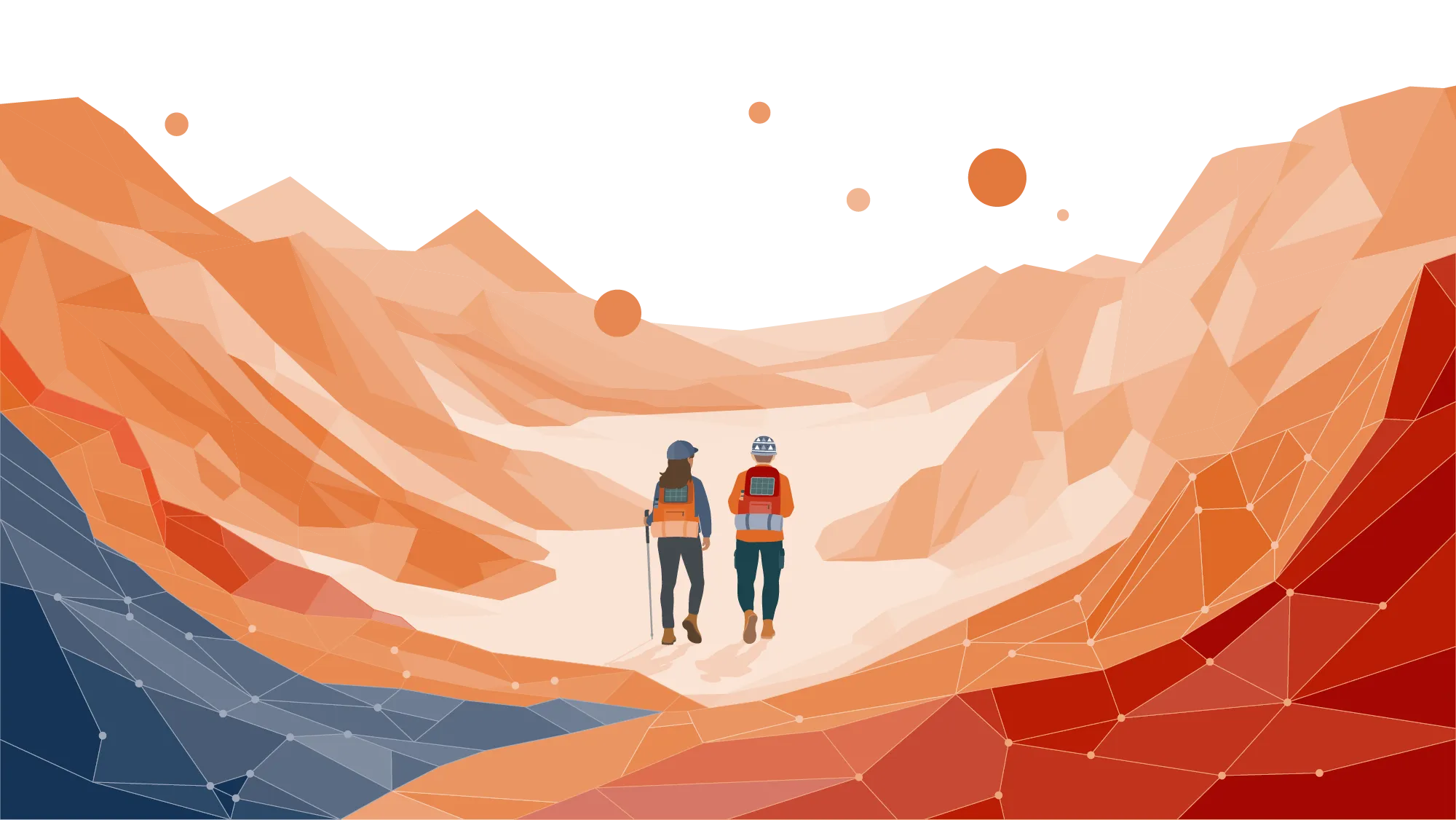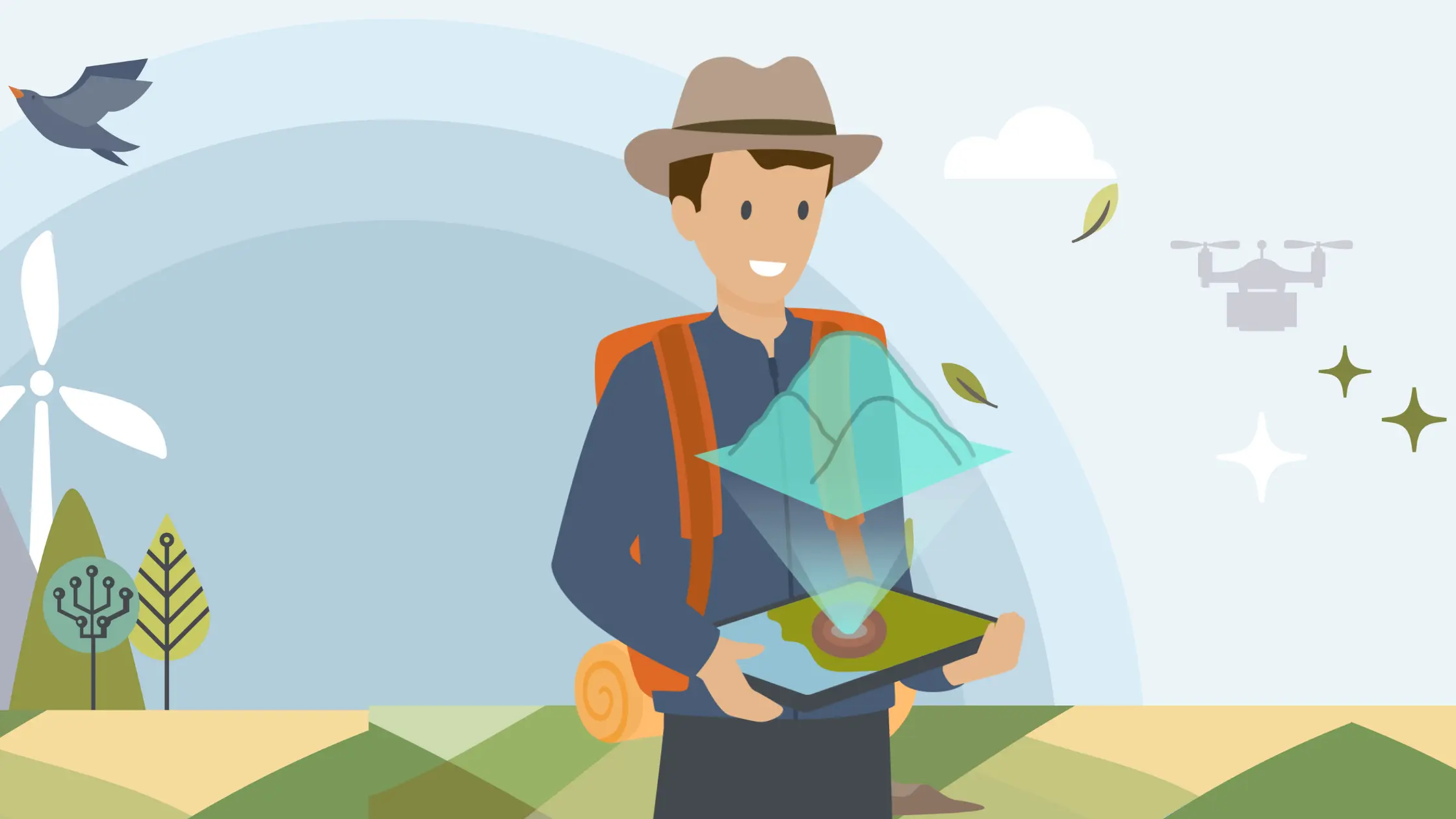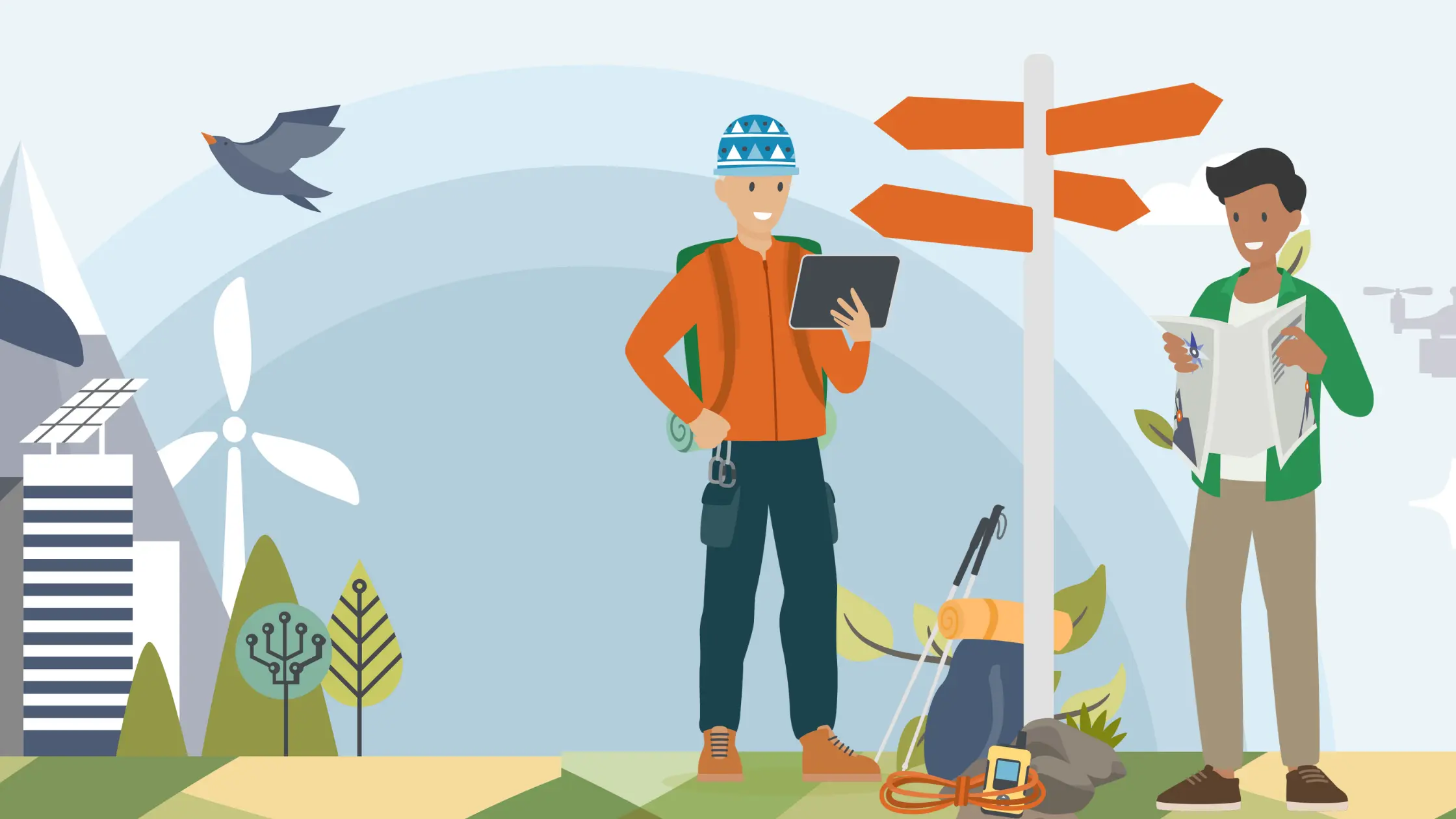As artificial intelligence (AI), automation, and digital acceleration redefine how we work, we stand at a pivotal moment—not just in tech terms, but in how we equip people and organisations to thrive alongside it.
From my experiences leading workforce and technology transformations across Australia, North America, and Europe, I share the opportunities and growing pains that come with preparing people for what's next. With McKinsey & Company projecting that up to 30% of global work hours could be automated by 2030, the time we 'save' must be redirected—toward work that’s more meaningful, more valuable, and more human.
This paper offers practical guidance through our Future Workforce Capability Framework. Inspired by past transformations—in digital, agile, and pandemic-induced remote work—it’s designed to help leaders act with clarity and courage, starting today.
We’re in a defining moment. Technology, particularly AI and computational power, is evolving faster than many organisations can keep up with. While most conversations revolve around what technology can do, I think the better question is: What will people do?
In my work, I hear the same three things from leaders: excitement about AI’s promise, concern about whether their people are ready, and what to do with limited and reducing budgets, as evidenced in Gartner’s recent 2025 Q1 CIO report. Technology investments alone aren’t enough. If we want to unlock real value, we need to invest in people: their mindset, their skills, and their sense of purpose, and we need to make the decision on this investment in people at the same time we make the technology investment.
During a public sector transformation I led, we automated dozens of tasks. The tech was solid. But the people? They were left wondering what was next. That moment stuck. We'd improved efficiency but forgot to chart the next chapter. Since then, I've made it non-negotiable: every tech shift must be paired with a people strategy.
McKinsey’s data is clear: up to 30% of global work hours may be automated by 2030. That’s massive. But automation doesn’t create value. People do—when they’re supported, skilled, and empowered.
So, what now?
Generative AI can clear the decks, automating repetitive work and surfacing insights in seconds. But it doesn’t tell us what matters. That’s still our job.
Here in Australia, I’ve seen teams use the time they gained to go deeper into their challenges, taking the time to be more strategic, make better and more informed decisions, and invest in stronger relationships.
But I’ve also seen teams freeze. One exec summed it up perfectly: “We’re saving time, but we’re not sure what to do with it.” In these scenarios, it is increasingly evident that when the technology delivers an outcome, the workforce does not have the skills to utilise it.
We know that the significant technology advancements will change the jobs and tasks we do, and we cannot simply expect people to have the skills to excel in these new tasks. The World Economic Forum reports that nearly 23% of jobs globally will change by 2027 due to advancements in AI and other technologies, highlighting the urgency for reskilling and upskilling initiatives.
Gartner also advises CIOs to create succinct AI strategy documents that outline vision, benefits, risks, and best practices, ensuring that AI initiatives are aligned with organisational goals and capabilities.
This is why human capability uplift isn’t a bonus—it’s the bedrock.
AI now delivers insights faster than we can ask the questions. However, more data does not equal better outcomes—not unless people are confident interpreting and acting on it.
On one project, our team introduced powerful AI tools that could surface patterns in seconds. But they sat underused. Why? Because the client’s team didn’t feel confident enough to engage with them.
We went back to basics, teaching people how to frame questions, challenge assumptions, and turn insight into impact. That changed everything. I am genuinely excited about this transformation; when people and this technology truly collaborate, value can be achieved that neither can achieve on their own.
However, identifying and quantifying this value is the next significant challenge. The rapid emergence of technology means there are limited or no proven case studies or relatable stories to leverage. There are very few comparable tools to look at. Gartner summarise this perfectly in their 2025 Q1 CIO report when they state, “CIOs need a new way to think about the type of value AI can add to the organisation, which may look different from what executives expect today.”
In my current organisation, several of our leaders are working with clients on this very challenge, which cuts across all industry sectors. Adam Scott, one of JourneyOne’s product leads, observes:
“Making a commitment to delivering measurable, tangible value at every stage of the transformation is key. A value-led approach, that puts focus on your people, transforms AI from a theoretical exercise into a practical, impactful tool.
“By focusing on business outcomes, human capability uplift, and alignment of investment with value, along with scaling thoughtfully, the full potential of AI can be realised without unnecessary complexity or risk.”

According to McKinsey (2023), one in four CEOs believe that failing to close skill gaps will hurt performance and stall AI progress. They’re not wrong. The World Economic Forum emphasises that investing in people was a central theme at its Annual Meeting 2025, with discussions focusing on reskilling and closing the jobs gap in the Intelligent Age.
Some leaders assume people will just “figure it out”. But change fatigue, patchy skills, and unclear direction hold them back. It has been evident throughout my career that transformation takes off when human capability-building is treated as a strategic lever—as opposed to being seen simply as a change management exercise.
You can’t solve this in a silo. Organisational strategy, operating model, talent identification and development, and culture all need to play their part. The workforce we build must be sustainable, ethical, and have the resilience and agility to take on significant and frequent change. Gartner stresses that AI implementation is not solely an IT initiative but requires engagement from the entire executive team to define AI ambition and align it with organisational values.
I’ve had clients assume that adding AI tools would spark instant transformation. It didn’t. The real shift came when people saw purpose, felt safe to explore, and had the skills to act.
I often say: “You can’t automate your way out of a capability gap.”
Having been at the forefront (and on the receiving end!) of many transformations, it is evident to me that what is upon us is significantly different. I know that my executive colleagues in other organisations share the same view. Never in recent history has widely available technology shown such clear potential to bring meaningful value and transformative change to individuals.
.png)
The Future Workforce Capability Framework is our practical response to a hard question: How do we prepare people for a future that’s still unfolding? Perhaps even more importantly, given the scale and complexity of this transformation: Where do I start?
Built from years of capability-based planning experience across multiple sectors and significant human-technology collaboration research and testing over the last 12 months, our framework acts as a compass and a toolkit. It helps organisations identify and scale the capabilities that are right for them, and helps individuals unlock their potential to thrive in this future of work.
The capability map is not just about tech fluency. We need problem-solvers, value- hunters, storytellers, collaborators, and critical thinkers. Most of all, we need people with the mindset to keep growing and evolving in environments where they feel safe and supported.
Cristina Londoño, our Future of Work Lead, said: “Whilst a lot of the discussion is about the emergence of technology, the capabilities that will matter most in a changing world aren’t technical, they’re deeply human. The more we explored this space, the clearer it became: creativity, critical thinking, adaptability, and emotional depth aren’t soft skills— they’re survival skills. And they’re how we create real value in the midst of change.
“I’ve seen frontline staff become innovation champions, once they felt trusted and supported. It reminded me: transformation is personal before it’s procedural.”
To truly evolve, organisations need more than tools. They need infrastructure: agile models, embedded learning, ethical frameworks, and human-centred AI design.
One client restructured their operating model to build learning into everyday work. The shift was subtle but profound. People stopped reacting to change—and started driving it.

If there is any single role that is sitting here right now asking themselves, “so, what now?” it is those in leadership positions. In a recent candid discussion with one CIO, we agreed that this transformation is changing what we do, how we do it, and how we do it safely. The expectations on the value it will enable are just as significant and immediate from the workforce we lead as they are from the Executives who measure us. Not to forget that our own role is changing significantly at the same time!
Not long ago, a senior executive asked me: “If AI is this powerful, why aren’t we seeing evidence of sustained value yet?”
My answer: Because value doesn’t come from the tech. It comes from how people use it, and it is here that we have only just begun.
Leaders don’t need to know every algorithm, but they do need to create the right environment—one where people can experiment, learn, evolve and grow. That means offering:
Transformation doesn’t begin with a directive. It begins with trust. The most successful shifts I’ve led had one thing in common: leaders who said, “I don’t have all the answers, but I’ll make space for us to find them together.”
Leaders play a key role in helping employees, the organisation, and themselves invest in building capabilities. They set a clear direction, encourage a culture of ongoing learning, and make sure there are resources in place for development. By giving employees the freedom to take ownership of their growth, while also holding them accountable, they create an environment where learning is valued. Leaders also promote collaboration across teams, allowing employees to learn from one another and expand their skills.
By connecting development with the organisation’s broader goals, they make learning relevant and impactful. When leaders invest in their own growth and lead by example, it inspires their teams to do the same. As thinkers like Kotter, Senge, and Collins have pointed out, when leaders are committed to personal and team development, they set the stage for long-term success and competitive edge.
That’s where progress starts.
At JourneyOne, we have a strong belief: technology amplifies, people lead. It is our role to ensure that when our clients are faced with the “so, what now?” question, we can support them in their pathways to meaningful value.
And we bring the people capability uplift focus in alignment with your technology investment decisions.
From healthcare to mining, from ethics to automation—we meet you where you are. And we walk the journey with you.
Klaus Schwab, Founder and Executive Chairman of the World Economic Forum, emphasises the importance of global cooperation to ensure that technological advancements lead to equitable and sustainable outcomes in the Intelligent Age.
In every successful transformation I’ve seen, one thing stands out: co-creation. When people feel like part of the story, they help write the ending.
These weren’t just moments. They were lessons. And they still matter.
The future of work isn’t just about technology. It’s about people, purpose, and progress that includes everyone.
For leaders, your most strategic move right now is to invest equally in your tech stack and your people. Get ahead of the curve by focusing on where value really comes from. Start with small wins. Build capability early. And most of all—start now.
To be sustainable, this isn’t just about keeping pace and being reactive to hype and expectation. It’s about shaping the future on your terms.
Our role at JourneyOne is to be on the journey with leaders, to enable them to thrive in a world where humans and technology collaborate.




If you’re ready to discuss your goals, reach out to us via the form and one of our team members will be in contact with you.